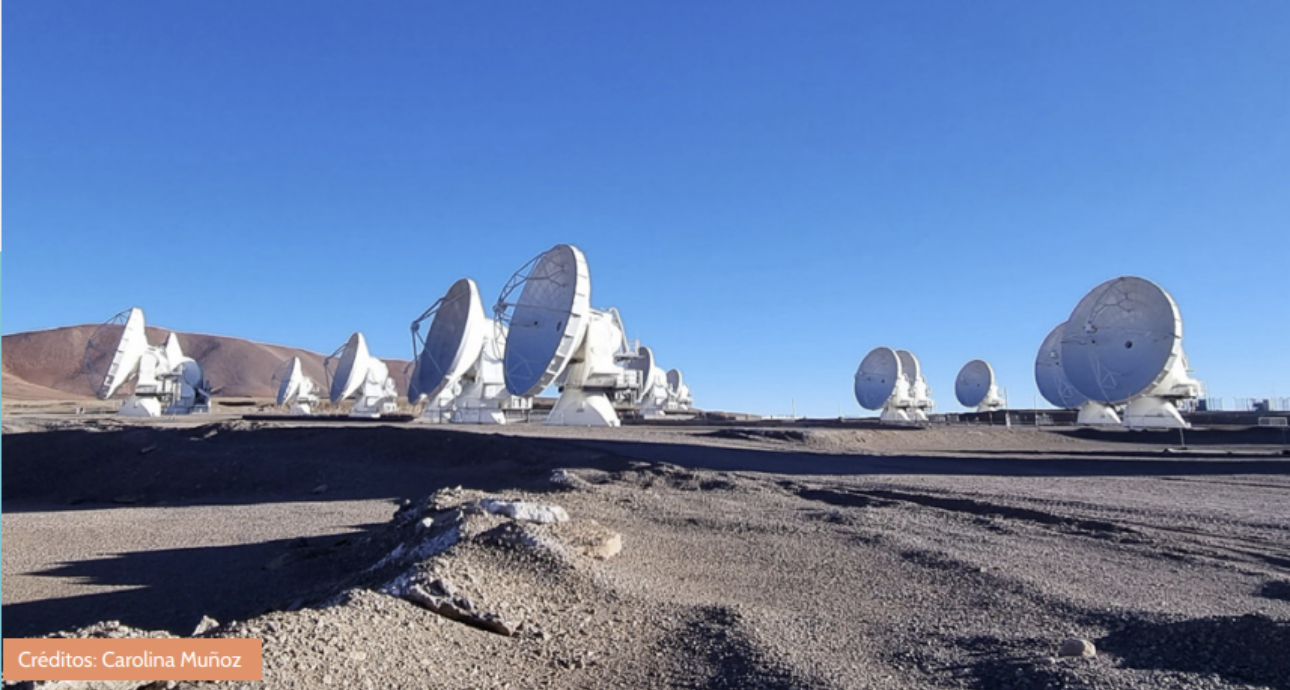Cases & Voices
- Ixchel Pérez
REUNA installed the highest node in the world, at an altitude of more than 5,000 metres.

The Chilean Academic Network's Point of Presence will directly connect the numerous astronomical projects that will be installed on the Chajnantor plain in the Atacama Desert, in order to transmit the data generated by them via the global networks for research and development.
Author: Carolina Muñoz (REUNA). Since it became operational in 2013, the ALMA Observatory has been linked to REUNA as a strategic partner to overcome the major technological and operational challenges of connecting the world's largest radio telescope to global research and education networks, in order to quickly and securely transport the enormous amount of data it generates every day to Santiago (where its main archive is located) and from there to its regional archives in East Asia, Europe and North America. As part of this alliance, both institutions have signed a new agreement to install and operate a REUNA network Point of Presence (PoP) in the ALMA Operations Site (AOS) technical building, located in the centre of Llano de Chajnantor, Antofagasta region.
The implementation of this project has already started and on 26 April the REUNA equipment was installed at the AOS and is currently in the testing phase. The implementation of this PoP is a milestone, as it is the first node of a national research and education network to operate at an altitude of more than 5,000 m.
Its purpose is to connect around twelve astronomical projects to be installed in the vicinity of ALMA - representing scientific interests from countries in Asia, Europe, North and South America - to the REUNA high-speed network, in order to send the data generated by them in near real time to any place in the world where it is needed. At the same time, robust, low-latency connectivity will allow these centres to operate their instruments remotely, saving resources and ensuring continuity of operations, even in extreme geographical and environmental conditions.
As Jorge Ibsen, Head of Computing at the Joint ALMA Observatory, comments, “the presence of a PoP will facilitate access to connectivity on the Chajnantor Plateau for other astronomical facilities for the transmission of scientific data”.
Frontier research without limits
From a technical point of view, the implementation of this project is an enormous challenge that can only be met thanks to the collaboration of all those involved. As Albert Astudillo, REUNA's Technology Manager, explains: “The physical connectivity for each of the astronomical projects will be achieved through the synergy of the efforts of different actors who, depending on the mountain where the observatory is installed, will work together to provide the infrastructure to achieve the final goal, which is a last mile in fibre optics. Once the data is received at the Chajnantor PoP, it is transported to Antofagasta, and from there, through the REUNA trunk, to Santiago, and then abroad, through the International Research and Education Networks.”
Worldwide, the Academic Networks provide dedicated connectivity services that meet the demanding capacity and security requirements of the world's major astronomical and scientific centres, as well as thousands of universities and cultural institutions in more than 140 countries, facilitating the exchange of information, access to shared resources and collaboration between people, regardless of their geographical location.
In Chile, REUNA has a digital platform of 11,000 kilometres, fully supported and connected to the international academic networks RedCLARA (Latin America) and GÉANT (Europe). This allows it to provide services with fast traffic and low latency to the main connectivity hubs in North America, Europe, Asia, Africa and Oceania.
According to Paola Arellano, Executive Director of the company, "our network has 100 Gbps channels between Antofagasta and Santiago, and thanks to REUNA's participation in the BELLA project, international connectivity from Chile to Europe also runs on dedicated 100 Gbps channels, guaranteeing first-class connectivity for all current and future astronomical projects installed on the Chajnantor Plateau".
For more than 20 years, REUNA has been working with the largest astronomical projects located in Chile, contributing its experience in the implementation and subsequent operation of digital network infrastructures specifically designed to meet their needs. Some examples are AURA's Vera C. Rubin Observatory, currently under construction. Rubin Observatory, currently under construction in the Coquimbo region, which will generate about 20 terabytes of data per night; the Paranal and La Silla Observatories (both ESO), Cerro Tololo and Gemini Sur (both AURA), and the Las Campañas Observatory. This spirit of collaboration is the essence of the global R&E Network community.




